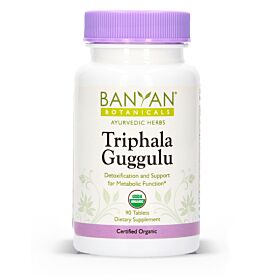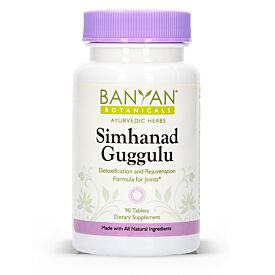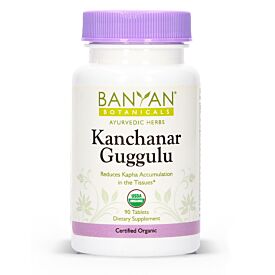Ayurvedic Herbs: Guggulu
/Ayurvedic Herbs
Ayurvedic herbs are one of the many chikitsas or treatments used in Ayurvedic medicine. These herbs are used as part of an herbal protocol recommended by an Ayurvedic professional. Thusly, all the Ayurvedic herbs should not be self-administered and Ayurvedic herbs should only be taken under-advisement of your Ayurvedic Counselor/Practitioner/Doctor and approved by your Primary Care Physician. The information on the Ayurvedic herb of Guggulu is only meant to educate you on the ways in which it is traditionally used in Ayurveda and is presented for educational purposes only. It is not intended as a substitute for the diagnosis, treatment, or advice of a qualified, licensed medical professional. The facts presented are offered as information only, not medical advice, and in no way should anyone infer that we are practicing medicine. Seek the advice of a medical professional for proper application of this material to any specific situation. Do not use the information found within this post to self-diagnose any medical conditions or treat any health problems or diseases. The information provided is not intended to prescribe or be taken as medical advice. If you have or suspect that you have a medical condition please contact your health care provider immediately.
“The essence of all beings is Earth. The essence of Earth is Water. The essence of Water is plants. The essence of plants is the human being.
Esam bhutanam prthivi rasha, prthivya apo raso-pam osadhayo rasa, osadhinam puruso rasah.”
Guggulu
Latin Name: Commiphora mukul
Plant Family: Burseaceae
English Name: Indian Bedellium
Sanskrit Name: Guggulu
Part Used: resin
Botanical Description: tree is 1.5-2 meters high and small and thorny; flowers are brown and have 5 petals; fruits are round and red; gum resin is thick, multicolored
Taste (Rasa): bitter, astringent, pungent, sweet
Energetics (Virya): heating
Post-Digestive Effect (Vipaka): pungent
Quality (Guna): light, penetrating
Dosha: VK- P+ (in excess)
Tissues (Dhatu): all plasma (rasa), blood (rakta), muscle (mamsa), fat/adipose tissue (meda), bone (asthi), nerve/bone marrow (majja), reproductive tissue (shukra [male]/artava [female])
Systems (Srotamsi): circulatory (rakta vaha srotas), digestive (anna vaha srotas), respiratory (prana vaha srotas), nervous (majja vaha srotas)
Constituents: lignans, guggulligan 1 & 2, sterols (guggulsterone, guggulsterol); terpenes (cembrene, mukulol); essential oil (myrcene, eugenol)
Actions: rejuvenative, stimulant, alterative, nervine, antispasmodic, analgesic, expectorant, astringent, antiseptic
Ayurvedic Actions: alleviates all dosha (sarvadoshahara); clears fat tissue (medhoghna); blood purifier (raktasodhaka), scrapes ama from srotas (lekhaniya); enkindles digestive fire (dipaniya); rejuvenative (rasayana); promotes strength (balya); promotes sexual appetite (vrsya); analgesic (vedanasthapana); affinity for voice (kanthya/svarya); promotes menses (artavajanana); destroys ama (amanasaka)
Biomedical Actions: anti-inflammatory, antiplatelet, antichoesterolaemic, astringent, antiseptic, immune stimulant, emmenagogue
Indications: cholesterol, arthritis, heart, gynecology, infections, bones, cancer
Precautions: acute kidney infections, acute stage of rashes, excessive uterine bleeding, thyrotoxicosis, pregnancy and breast-feeding, reported to reduce the effect of antihypertensives such as propranolol and diltiazem and so medication should be adjusted accordingly, caution with hypoglycemic medication
Preparations: pill, powder, paste
Formulations: gokshuradi, yograj, mahayogaraj, saptavinshati, kaishor, chandraprabha vati
Guggulu is a purifier and rejuvenator. It is especially beneficial for Vata and Kapha prakruti (constitution) and vikruti (imbalances). Guggulu is often used with other herbs to make Ayurvedic herbal formulas.
References
Frawley D. Yoga & Ayurveda: Self-Healing and Self-Realization. Twin Lakes, Wisconsin: Lotus Press; 1999.
Frawley D, Lad V. The Yoga of Herbs: An Ayurvedic Guide to Herbal Medicine. Twin Lakes, Wisconsin: Lotus Press; 2001.
Gogte VM. Ayurvedic Pharmacology & Therapeutic Uses of Medicinal Plants: Dravyagunavignyam. New Delhi, India: Chaukhambha Publications; 2016.
Pole S. Ayurvedic Medicine: The Principles of Traditional Practice. Philadelphia, PA: Singing Dragon; 2013.
















